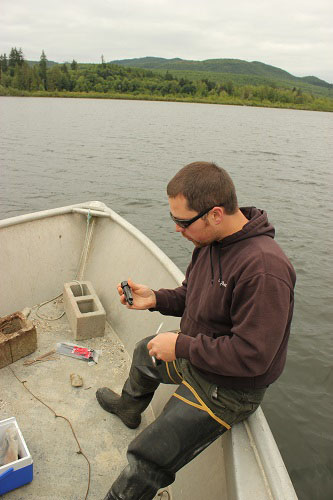Northwest Indian Fisheries Commission
June 19, 2014

The Squaxin Island Tribe is getting to the bottom of Lake Isabella, to find out if water temperatures are affecting salmon populations downstream.
“Warm water can really hurt juvenile salmon before they migrate out to the ocean,” said Sarah Zaniewski, habitat biologist for the Squaxin Island Tribe. Warm water can spawn diseases and carries little of the dissolved oxygen that salmon need to breathe. Because salmon are cold blooded, warm water increases their metabolic rate forcing them to use energy needed for survival.
“We’re taking a closer look at what exactly causes warming and cooling of Lake Isabella, Mill Creek, and all it’s tributaries, and how that would impact salmon,”said Erica Marbet, the tribe’s hydrologist.
Throughout the summer, tribal researchers will take the temperature of the lake, and throughout Mill Creek, the lake’s downstream tributary. “One of the important things to find out is how the lake’s temperature changes as you get deeper,” Marbet said. “That way, we can figure out how important the lake is to the temperature in the creek.”
The researchers will also walk portions of the creek to find out why it warms and cools at different places.
“Because coho salmon spend their first year of life in freshwater they are especially vulnerable to changes in freshwater habitat,” Zaniewski said.
This year’s temperature study follows on an intense habitat survey by the tribe last year of Mill Creek. Like most South Sound streams, Mill Creek coho production dropped off about 20 years ago. “We don’t have a clear understanding why after no obvious changes in the past 20 years, that Mill Creek doesn’t have more adult spawners,” Zaniewski said.
The tribe’s work on Mill Creek is a part of a larger regional effort by the tribe to restore and protect salmon habitat. “Making sure salmon have quality habitat is the best way we can bring back decreased runs,” said Andy Whitener, natural resources director for the Squaxin Island Tribe.
